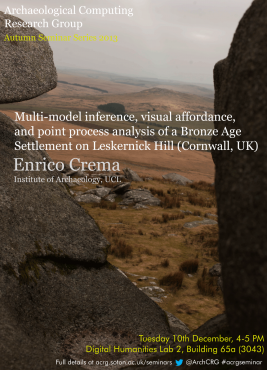Multi-model inference, visual affordance, and point process analysis of a Bronze Age settlement on Leskernick Hill
Information criterion is a robust and flexible inferential framework that offers an alternative to the traditional hypothesis testing approach adopted by most archaeologists. Rather than testing the empirical record against a pre-defined null model, information criteria provides a statistical tool to compare alternative models and suggest whether one of them is better than the others. This paper illustrates an example of this inferential framework by combining point-process modelling and visibility analysis to infer the reasons behind the Bronze Age settlement pattern of Leskernick Hill in Cornwall, UK. Results suggests that the settlement on Leskernick Hill was most likely the result of two separate decision-making processes, one to optimise the visibility of ritual monuments and important natural landmarks, and the other to optimise the visibility of nearby tin- extraction areas.

